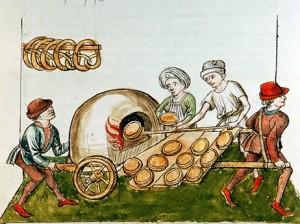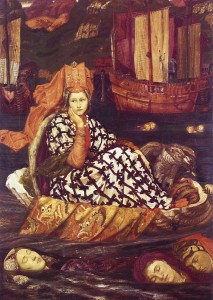 Here are some shiny things that caught my eye recently:
Here are some shiny things that caught my eye recently:
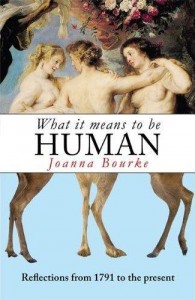 ♦ At left is my favorite book cover of the week for What It Means to Be Human: Historical Reflections from 1791 to the Present by Joanna Bourke (click to see larger). The American cover uses red instead of blue, which I don’t like quite as much as the British version. Here’s the book description on Amazon:
♦ At left is my favorite book cover of the week for What It Means to Be Human: Historical Reflections from 1791 to the Present by Joanna Bourke (click to see larger). The American cover uses red instead of blue, which I don’t like quite as much as the British version. Here’s the book description on Amazon:
In 1872, a woman known only as “An Earnest Englishwoman” published a letter titled “Are Women Animals?” in which she protested against the fact that women were not treated as fully human. In fact, their status was worse than that of animals: regulations prohibiting cruelty against dogs, horses, and cattle were significantly more punitive than laws against cruelty to women. The Earnest Englishwoman’s heartfelt cry was for women to “become-animal” in order to gain the status that they were denied on the grounds that they were not part of “mankind.”
In this fascinating account, Joanna Bourke addresses the profound question of what it means to be “human” rather than “animal.” How are people excluded from political personhood? How does one become entitled to rights? The distinction between the two concepts is a blurred line, permanently under construction. If the Earnest Englishwoman had been capable of looking 100 years into the future, she might have wondered about the human status of chimeras, or the ethics of stem cell research. Political disclosures and scientific advances have been re-locating the human-animal border at an alarming speed. In this meticulously researched, illuminating book, Bourke explores the legacy of more than two centuries, and looks forward into what the future might hold for humans, women, and animals.
♦ Check out this great Roy Lichtenstein-inspired costume! If you aren’t familiar with his work, Lichtenstein drew deliberately from comic books (a lot of romance comics) for his paintings where the visible markers of the newsprint comics printing process was emphasized (i.e., the little dots of color), and he helped launch the Pop Art movement. The site Deconstructing Roy Lichtenstein has a side-by-side comparison of the original comic-book art with Lichtenstein’s paintings.
♦ Theodora Goss has a great post titled “Style as Story,” inspired by Justine Musk’s statement (in a post Goss links to) that “Style is the story you tell about yourself to the world.” Her reflections are insightful, and I was particularly interested in them as I think about style quite a bit as a writer (perhaps too much, one might argue) and as a reader. I also have a very definitive style off the page, though I usually refer to it as my aesthetic rather than my style, but they’re really both the same thing. Certainly my aesthetic tells a story about me, though since it’s a story I’m usually telling myself, I’m always curious to know how other people read it. Anyone interested in telling me what story my style tells you about me?
♦ Madolyn, one of my former creative writing students (and advisee!) who’s now living in Shanghai, sent me the link to “For the Origins of Pie, Look to the Humble Magpie,” a fascinating article on NPR by Alison Richards. If you’re a word-, pie-, or magpie-nerd like me, you’ll love this piece. Thanks for the heads up, Madolyn!
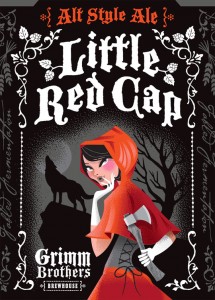 ♦ Combine your love of fairy tales and German beer with the potent potables from Grimm Brothers Brewhouse, like Little Red Cap Alt Style Ale, Snow Drop Honey Wheat Ale, and The Fearless Youth Dunkel Lager. Via.
♦ Combine your love of fairy tales and German beer with the potent potables from Grimm Brothers Brewhouse, like Little Red Cap Alt Style Ale, Snow Drop Honey Wheat Ale, and The Fearless Youth Dunkel Lager. Via.
♦ Chris Lough at Tor.com gives a good review to “The Book Job,” The Simpsons episode guest-starring Neil Gaiman in “Neil Gaiman Doesn’t Know How to Read.” As hard as it might be for longtime Simpsons fans to believe, that episode really was funny. You can watch the ep on Hulu.com tomorrow. Lough also links to a more detailed review at The Onion‘s A.V. Club.
♦ Also over at Tor.com, Jo Walton reflects on Geoff Ryman’s novel, The Warrior Who Carried Life. I particularly enjoyed Walton’s analysis of The Warrior Who Carried Life as a novel, or a not-novel:
It’s much more like magic realism than fantasy—but it’s not so much that it doesn’t fit within the category of “fantasy” as that it doesn’t fit within the category of “novel.” “Novel” is a mode that expects psychological realism even when fantastical events are commonplace. What Ryman gives us is mythic realism and mythic characterisation. It’s beautifully written, and beautifully described, but the experience of reading it is much more like reading a myth than reading a modern retelling of a myth.
I highly recommend reading The Warrior Who Carried Life, especially if you like beautiful prose (Ryman really is a fantastic writer, in all senses of the word) and books that explore gender issues.
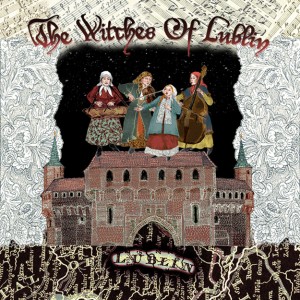 ♦ One of my favorite authors, Ellen Kushner, is hard at work with her co-writers on an audio drama titled The Witches of Lublin (Neil Gaiman is one of the cast members). If you can donate something to the cause, there’s a donation box at the bottom of the link.
♦ One of my favorite authors, Ellen Kushner, is hard at work with her co-writers on an audio drama titled The Witches of Lublin (Neil Gaiman is one of the cast members). If you can donate something to the cause, there’s a donation box at the bottom of the link.
♦ I shared this link with Cameron recently, and I think other fiction writers reading this post might also find it of interest: Juliette Wade has a pretty helpful Checklist for Deep POV. Some great tips!

